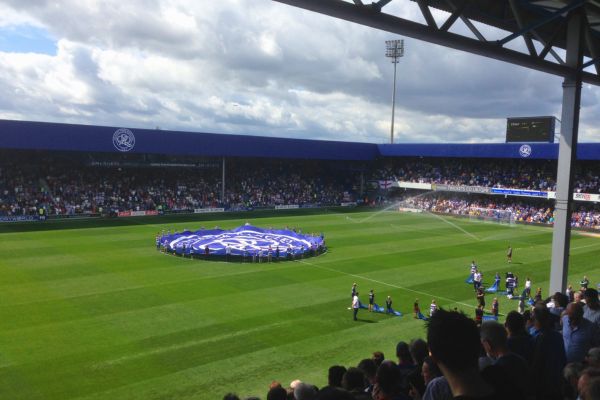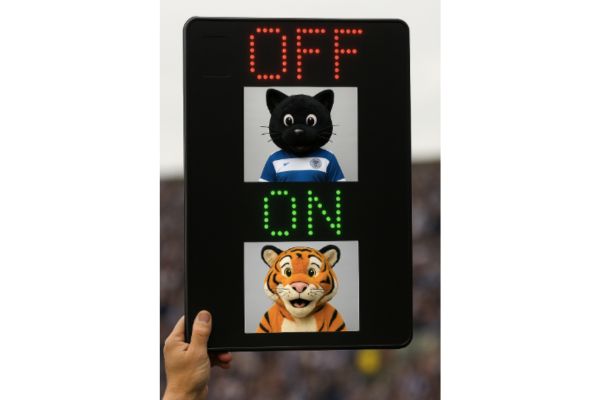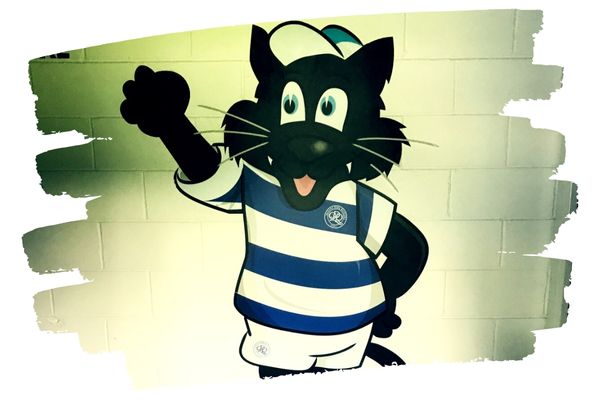Imagine this: a human-sized black cat, dressed in the full QPR kit of iconic blue and white hoops, complete with a matching cap and oversized blue shoes, trudging off the pitch and down the tunnel at Loftus Road Stadium.
The cat slips through a side door into a tiny changing room and slumps onto a bench. His head drops into his hands, shaking in quiet despair. This is Jude the Cat, QPR’s matchday mascot. And from the outside, you might think he’s mourning a bad result—a derby defeat, perhaps? Or worse... relegation?
But for Jude, this moment is personal. Deeply personal. The furry entertainer who had delighted fans for years had just been told: he was no longer wanted.
Why was this? And what happened next? Let’s take a look at the curious story of Jude the Cat—and QPR’s short-lived mascot experiment.
The Rise of Jude the Cat
At the heart of this tale is Jude the Cat, the beloved black feline mascot introduced in 1998. Named after a real cat that once roamed Loftus Road and a nod to the club’s roots in St Jude’s Institute, Jude quickly became a fan favorite. With his QPR kit and cheeky grin, he was more than a costume—he was a symbol of the club’s spirit and history.

Enter Spark the Tiger
But then came 2007. Enter Flavio Briatore—Formula One mogul, new QPR co-owner, and bringer of change. And not just in the boardroom.
In Italian culture, black cats are considered bad luck. And Jude? Well, he was black. That didn’t sit well with Briatore, who reportedly removed the real cat from the stadium and began plans to replace the mascot.
Cue Spark the Tiger—a new face with bright orange fur and bold black stripes. His name, cleverly pulled from the middle of QueenS PARK Rangers, marked the arrival of a new era. It was bold. It was bright. But it wasn’t Jude.

Spark did his best. He waved at kids, danced at halftime, and posed for photos. But something was missing. Jude the Cat had become more than just a sideline act—he was QPR. Fans noticed. They missed him.
Jude's Triumphant Return

And slowly, quietly, Jude returned. The cat clawed his way back.
Today, Jude once again roams the touchlines at Loftus Road, paws high and full of pride. Spark? He’s faded into mascot memory—an odd footnote in QPR’s colorful history, fondly (and sometimes bemusedly) remembered by a few.
In the ever-evolving world of football, mascots may come and go. But Jude the Cat? He’s got nine lives. And we’re glad he used a few of them to find his way back home.
Want More Club Curiosities?
If you're into the stories behind the stadiums and mascots that shape a club’s identity, we’ve got more for you:
Loftus Road Stadium’s South African Connection – Discover the unexpected international roots of QPR’s home ground.
Why Are Watford Called The Hornets? – From kits to Harry the Hornet, explore how Watford’s identity took flight.
